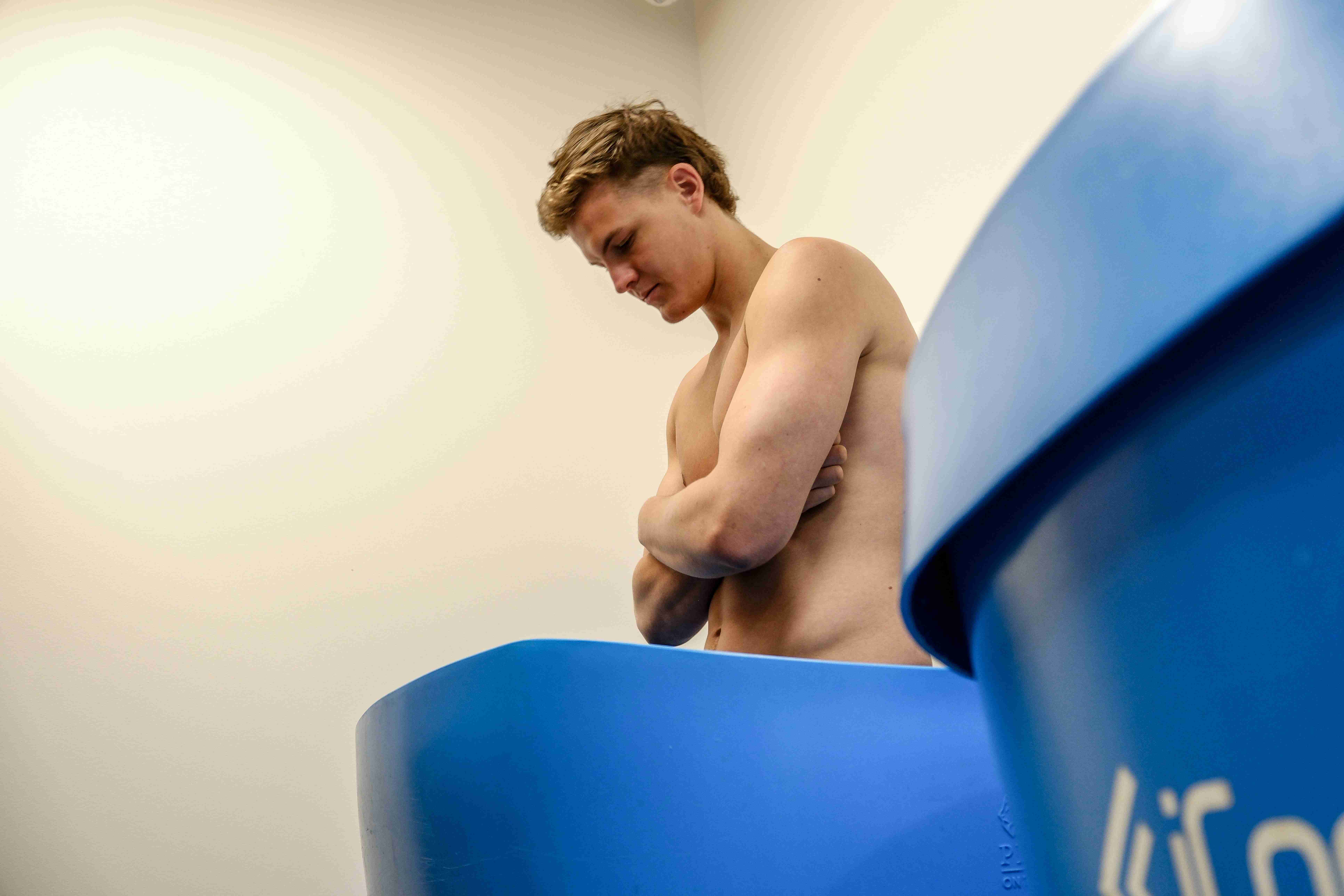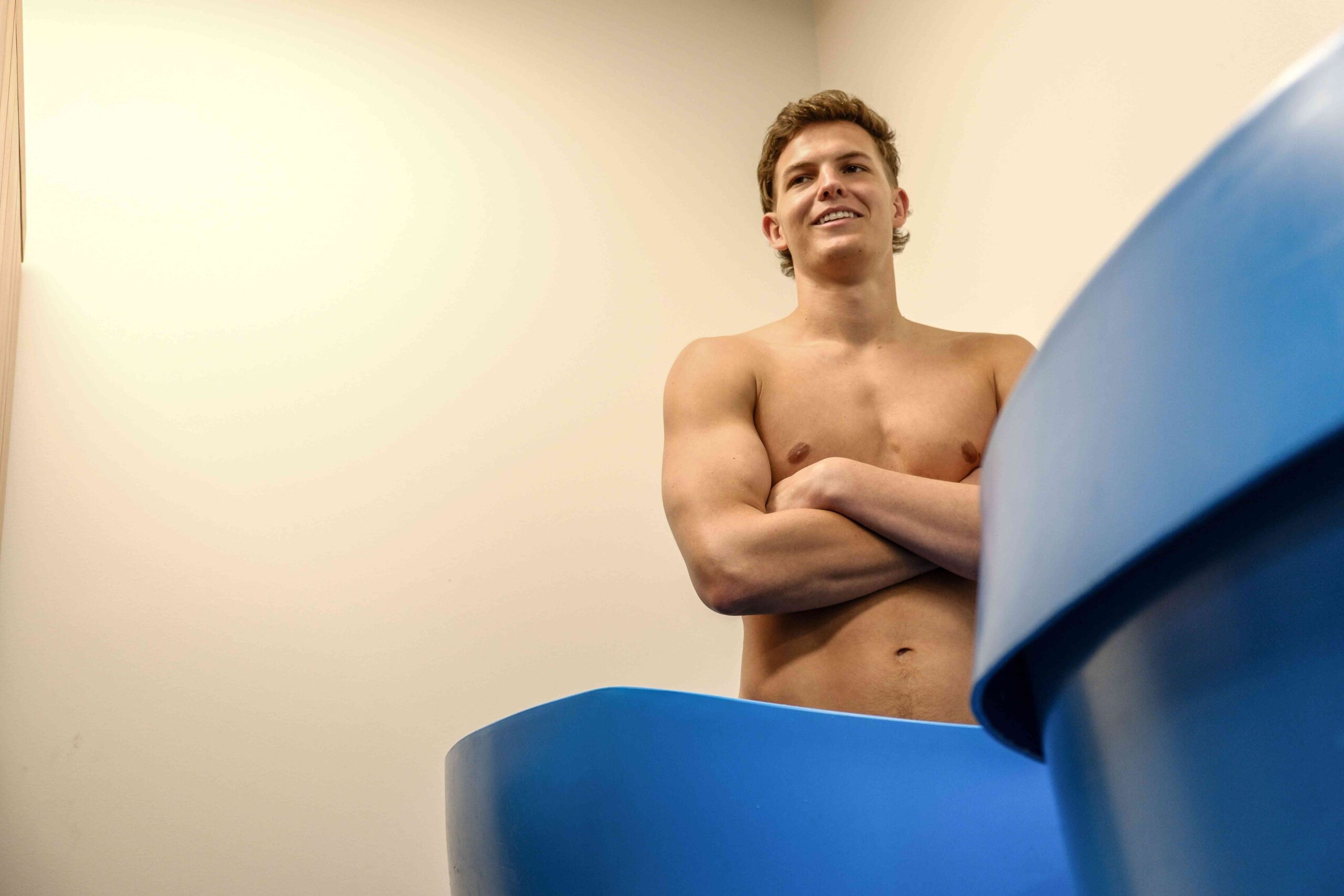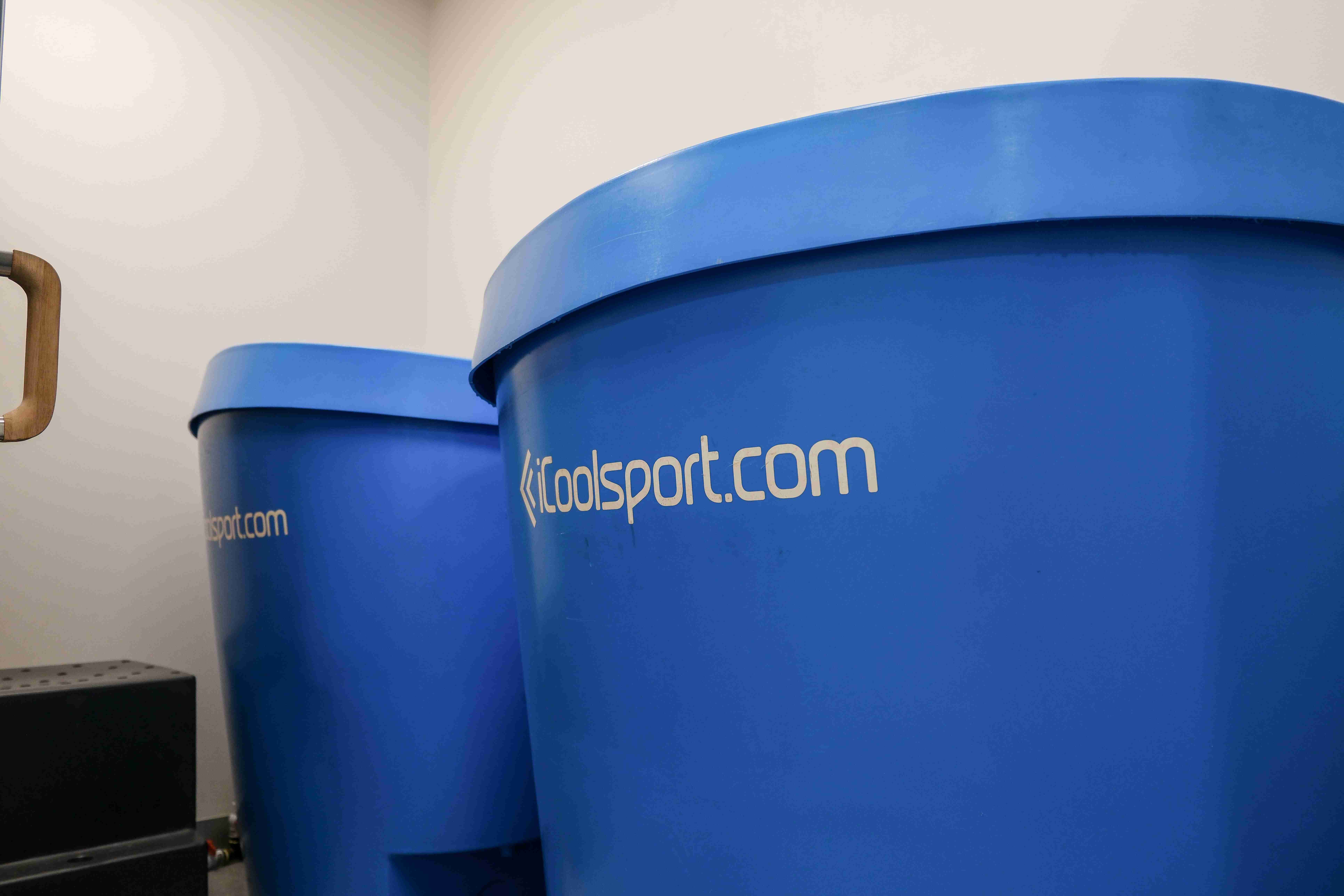Contrast therapy, also known as contrast baths or contrast showers, is a therapeutic technique that involves the alternating application of hot and cold temperatures to the body. It is commonly used in sports medicine, physical therapy, and wellness practices to promote recovery, reduce muscle soreness, improve circulation, and enhance overall performance.
The contrast therapy process typically involves immersing or exposing the body or specific body parts to hot and cold stimuli. The hot temperature is typically warm water or a heat pack, while the cold temperature is usually cold water or ice. The duration and frequency of alternating between hot and cold can vary depending on individual needs and specific treatment goals.
The primary goal of contrast therapy is to exploit the physiological responses of the body to the temperature changes. When exposed to heat, blood vessels dilate, leading to increased blood flow and vasodilation. This promotes relaxation, improves tissue oxygenation, and aids in the removal of metabolic waste products. On the other hand, exposure to cold temperature causes vasoconstriction, which reduces inflammation, numbs pain, and helps decrease swelling and tissue damage.
By alternating between hot and cold, contrast therapy aims to create a pumping effect on the circulatory system. This pumping action enhances blood circulation, facilitating the removal of waste products and delivery of oxygen and nutrients to the muscles and tissues. Additionally, the temperature contrast helps to stimulate the lymphatic system, which plays a crucial role in eliminating toxins and waste from the body.
- 1. Improved Circulation: One of the primary benefits of contrast therapy is its ability to enhance blood circulation. The alternating application of hot and cold temperatures causes blood vessels to expand and contract, promoting vasodilation and vasoconstriction. This process effectively pumps blood to the targeted area, facilitating the removal of metabolic waste products and delivering oxygen and nutrients to the muscles. Improved circulation can accelerate the healing process and reduce inflammation, leading to faster recovery after intense exercise or injury.
- 2. Reduced Muscle Soreness: Contrast therapy is widely recognized for its effectiveness in alleviating muscle soreness and reducing delayed onset muscle soreness (DOMS). The application of cold temperature helps to constrict blood vessels, reducing inflammation and swelling associated with muscle damage. The subsequent application of heat promotes vasodilation, enhancing blood flow to the muscles and promoting relaxation. The alternating cycle of hot and cold temperatures helps to minimize the buildup of lactic acid and other waste products, which contribute to muscle soreness, allowing athletes to recover more quickly and perform at their best.
- 3. Enhanced Muscle Recovery: Contrast therapy stimulates the lymphatic system, which plays a crucial role in removing toxins and metabolic waste from the body. The alternating temperatures help to flush out accumulated waste products, reducing the risk of muscle fatigue and improving recovery time. By promoting efficient waste removal, contrast therapy aids in the regeneration and repair of muscle tissues, supporting overall muscle recovery and enhancing athletic performance.
- 4. Pain Relief: The combination of hot and cold temperatures used in contrast therapy can provide effective pain relief. Cold temperature helps numb the area, reducing pain sensations, while heat promotes relaxation and soothes muscle discomfort. The alternating temperatures trigger the release of endorphins, natural pain-relieving chemicals produced by the body, providing a non-invasive and drug-free method of pain management.
- 5. Improved Range of Motion and Flexibility: Contrast therapy has been shown to enhance joint mobility and increase flexibility. The application of heat during the therapy session helps to relax and loosen muscles, tendons, and ligaments, promoting greater flexibility. Cold temperature, on the other hand, can help reduce joint inflammation and stiffness. The combination of these temperature contrasts can lead to improved range of motion and increased joint flexibility, crucial for athletes and individuals engaging in physical activities.
- 6. Mental and Psychological Benefits: Contrast therapy not only provides physical benefits but also offers mental and psychological advantages. The alternating sensations of hot and cold can stimulate the release of endorphins and provide a pleasant and invigorating experience. This can help reduce stress, enhance mood, and promote a sense of relaxation and well-being. Additionally, contrast therapy can aid in sleep quality, as the treatment promotes relaxation and can alleviate muscle tension or discomfort that may disrupt sleep patterns.
It is important to note that contrast therapy may not be suitable for everyone, especially those with certain medical conditions such as Raynaud’s disease, cardiovascular issues, or sensory disorders. It is advisable to consult with a healthcare professional or a qualified therapist before incorporating contrast therapy into your routine.
In conclusion, contrast therapy offers a range of benefits for athletes and individuals seeking effective recovery and performance enhancement. By improving circulation, reducing muscle soreness, promoting muscle recovery, relieving pain, enhancing flexibility, and providing mental relaxation, contrast therapy serves as a valuable tool in the field of sports medicine and physical therapy. Incorporating contrast therapy into a comprehensive



Experience premier pediatric physiotherapy at Team Elite Physio, serving Sandringham and Brighton East, Elwood, Hampton, and Moorabbin. Specialized treatments to support children’s health and vitality.


